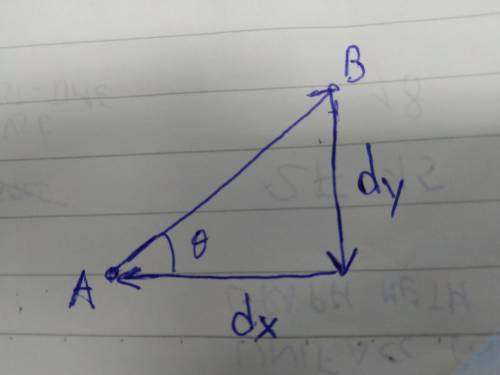
Physics, 06.09.2019 03:20 aliviadushane
Ahikers total displacement is 13 km at 35 degrees north east. if the hiker wishes to return to his starting point on a trail that goes due south and then due west, what will be the total distance he travels on his return trip? draw a diagram to show the directions and distances he travels .

Answers: 1


Other questions on the subject: Physics

Physics, 22.06.2019 04:00, mathnation1
If steel is more dense that lake water, why can a boat float
Answers: 1

Physics, 22.06.2019 10:30, johnthienann58
The precision of a laboratory instrument is ± 0.05 g. the accepted value for your measurement is 7.92 g. which measurements are in the accepted range? check all that apply. 7.85 g 7.89 g 7.91 g 7.97 g 7.99 g
Answers: 1

Physics, 22.06.2019 16:00, blythephillips2734
An charge with mass m and charge q is emitted from the origin, (x, y)=(0,0). a large, flat screen is located at x=l. there is a target on the screen at y position y(h), where y(h) > 0. in this problem, you will examine two different ways that the charge might hit the target. ignore gravity in this problem. 1.assume that the charge is emitted with velocity v(0) in the positive x direction. between the origin and the screen, the charge travels through a constant electric field pointing in the positive y direction. what should the magnitude e of the electric field be if the charge is to hit the target on the screen? express your answer in terms of m, q, y(h), v(0), and l. 2.now assume that the charge is emitted with velocity v(0) in the positive y direction. between the origin and the screen, the charge travels through a constant electric field pointing in the positive x direction. what should the magnitude e of the electric field be if the charge is to hit the target on the screen? express your answer in terms of m, q, y(h), v(0), and l.
Answers: 1

Physics, 22.06.2019 21:20, payshencec21
People with normal vision cannot focus their eyes underwater if they aren't wearing a face mask or goggles and there is water in contact with their eyes. in a simplified model of the human eye, the aqueous and vitreous humors and the lens all have a refractive index of 1.40, and all the refraction occurs at the cornea, whose vertex is 2.60 cm from the retina. with the simplified model of the eye, what corrective lens (specified by focal length as measured in air) would be needed to enable a person underwater to focus an infinitely distant object? (be careful-the focal length of a lens underwater is not the same as in air! assume that the corrective lens has a refractive index of 1.62 and that the lens is used in eyeglasses, not goggles, so there is water on both sides of the lens. assume that the eyeglasses are 2.05cm in front of the eye.)
Answers: 3
You know the right answer?
Ahikers total displacement is 13 km at 35 degrees north east. if the hiker wishes to return to his s...
Questions in other subjects:





Mathematics, 21.07.2019 18:30





Biology, 21.07.2019 18:30







